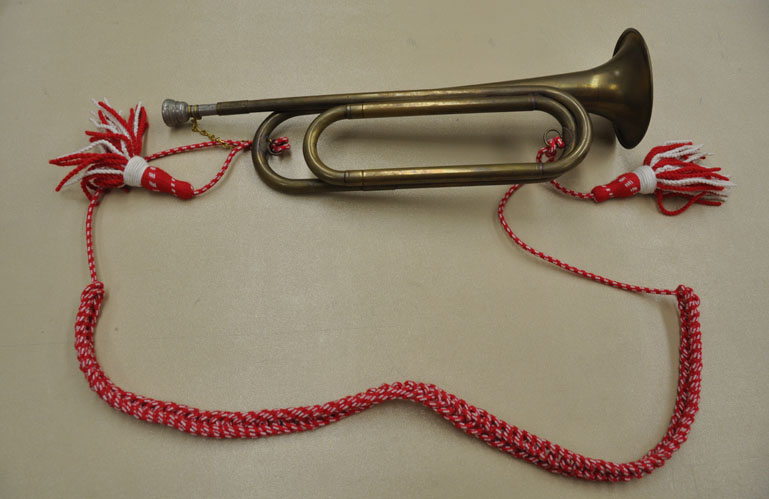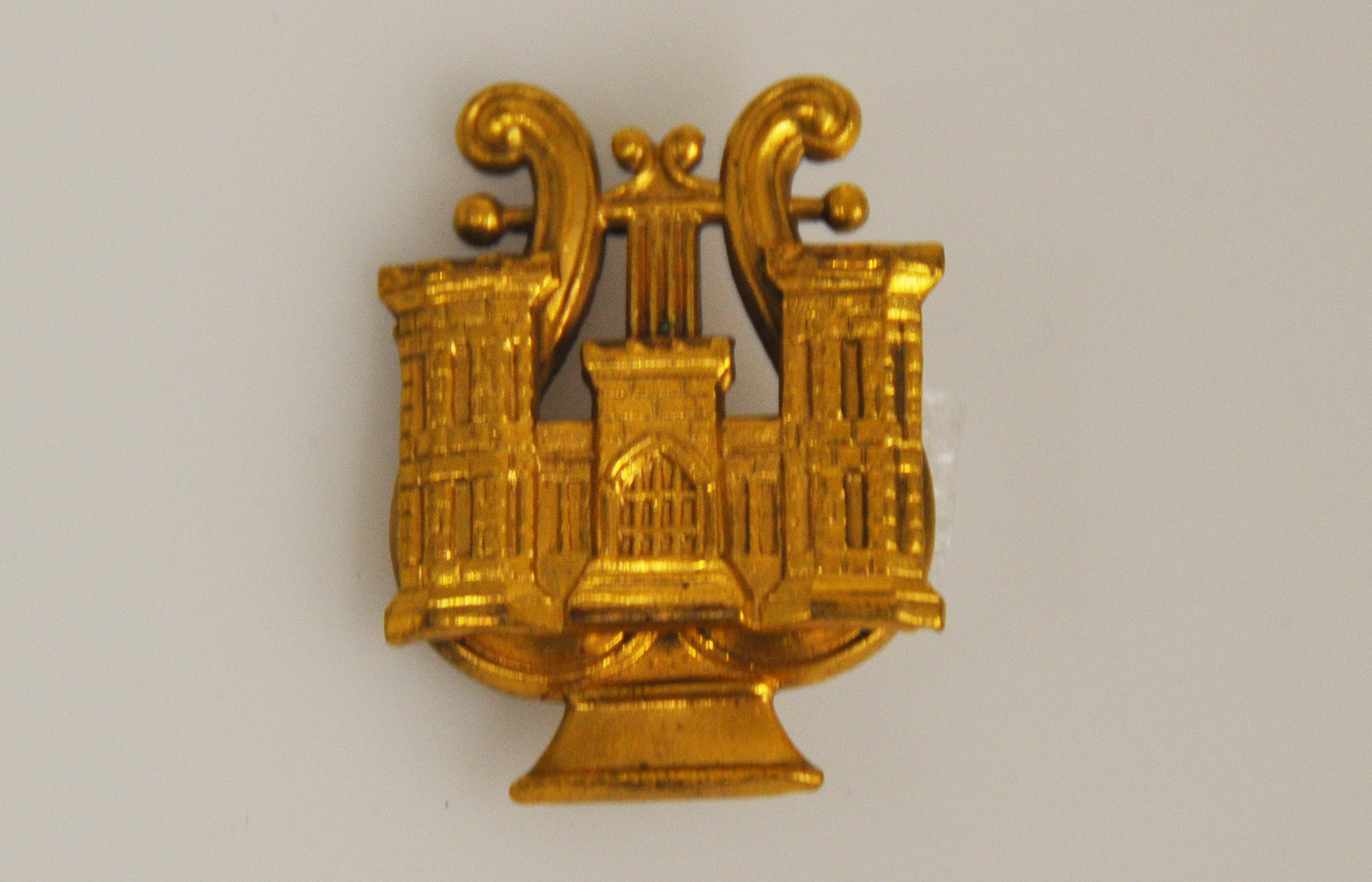Before phonographs, radios, motion pictures, and television, Americans embraced live music as one of the greatest means to entertain and strengthen ties between families and communities. In the late nineteenth century many American towns had a community brass band along with a bandstand near the center of town. These bands would have accompanied holiday celebrations, parades, political rallies, ribbon cuttings, and most other social events throughout the year. Military bands also became popular in the late nineteenth century to bolster national patriotism and morale and to accompany specific units in drill. In Washington, D.C., home to the Washington Marine Corps Barracks, the Washington Navy Yard, and the Washington Arsenal (later renamed Washington Barracks and today’s Fort Lesley J. McNair), residents and service members enjoyed the entertainment provided by numerous professional military bands, one being the U.S. Engineer Band.
.jpg?ver=2019-03-19-143800-803) |
|
.jpg?ver=2019-03-19-143439-973) |
|
.jpg?ver=2019-03-19-143440-083) |
| Engineer Band on the porch of what is likely the photo lab at Willets Point, N.Y. Julius Kamper is front row with baton. |
|
Julius Kamper in dress uniform holding cornet |
|
Army Band, ca. early 20th century, pre-WWI, at Washington Barracks, Washington, D.C. |
In 1880 nine men formed an informal band of engineer-musicians at the Engineer School in Willets Point, New York. The band’s ranks swelled to sixteen in 1887 and to twenty-four in 1894. The War Department formally established the U.S. Engineer Band in 1901 just a few months prior to the Engineer School’s relocation from Willets Point to the Washington Barracks in southwest Washington, D.C.
The Engineer Band performed at various venues throughout the city, from the Smithsonian Gardens, Judiciary Park, or the south lawn of the White House to their home base at the Washington Barracks. The band drew crowds with a diverse repertoire of everything from fashionable polkas to many of the band standards (by Sousa, King, Fillmore, Wagner, and Tobani) we still listen to today.
Sgt. Julius Kamper rose to become the U.S. Engineer Band’s Chief Musician in the early twentieth century. A Swiss immigrant, he was born in Rheinfelden in the northern canton of Aargau. He began studying music from the age of seven. Kamper specialized in the cornet but also played the violin, clarinet, and other instruments. Upon his graduation from high school, Kamper served his compulsory military service in the Swiss Army band and afterward toured Europe as a musician. Kamper emigrated to New York City in 1880 and performed with various bands there before joining the Engineer Band at Willets Point in 1883. Kamper followed the Engineer School and the Engineer Band to Washington, D.C., in 1901 and served as the band’s director until his retirement in 1912. He continued living in the District of Columbia where he was active in the Shriner’s Band and the Band of the Bureau of Printing and Engraving. Kamper passed away on December 28, 1936. On August 6, 1919, personnel of the Engineer Band were transferred to the Fifth Regiment of Engineers (and on January 13, 1921, to the Thirteenth Regiment).
.jpg?ver=2019-03-19-143555-647) |
|
.jpg?ver=2019-03-19-143441-460) |
|
 Cropped.jpg?ver=2019-03-19-143859-320) |
| Engineer Band, ca. 1900, on the steps of the Officers’ Mess at Willets Point, N.Y. |
|
Parade of Army Band on a wide avenue, possibly U.S. Engineer Band, ca.1885 |
|
Engineer Band formal photo, Washington Barracks, Washington, D.C. Julius Kamper first row standing. |
 |
|
TEST.jpg?ver=2019-03-19-143323-460) |
| Cover of a program for an Engineer Band concert in Washington, June 1905 |
|
Julius Kamper, formal portrait, wearing uniform and holding baton |
This selection of photographs is from the Charles Koeber U.S. Engineer Band Collection at the U.S. Army Corps of Engineers Office of History. The collection consists of materials associated with the donor’s father, Edward Koeber, and uncle, Julius Kamper. Both were veterans who served in the Philippines during the Spanish-American War and who were members of the U.S. Engineer Band. The collection includes nearly 40 photographs depicting the Engineer, the Bureau of Engraving, and the Shriner bands and musicians, Camp Devens in Massachusetts, and Washington Barracks in D.C. Also part of the collection is a large scrapbook of newspaper clippings, music lists and programs, and other information about the activities of the Engineer Band. The scrapbook itself is a recycled Engineer Band morning report book from the late nineteenth century with the contents pasted over the original official information. The Office of History acquired the collection in April 2013 directly from the creator/donor Charles Koeber. The objects pictured here are part of the Office of History’s general historical collection.
Please be advised that some of the images posted on this site are edited for visual clarity. The original versions, along with additional images from the Koeber collection, all in the public domain, are located in the USACE Digital Library where they can be viewed and downloaded.
 |
|
 |
|
 |
|
 |
| Engineer musician’s coat, probably from 1885, with 1902 Engineer buttons added later |
|
Model 1892 bugle (field trumpet), decorated with ceremonial Engineer scarlet-and-white braid, from the WWI era |
|
An Engineer band collar insignia that would have been worn between 1903 and 1916 |
|
Model 1881 engineer band helmet. The lyre indicates bandsman; the scarlet braid & castle buttons indicate engineer |
Office of History, Dec. 2016